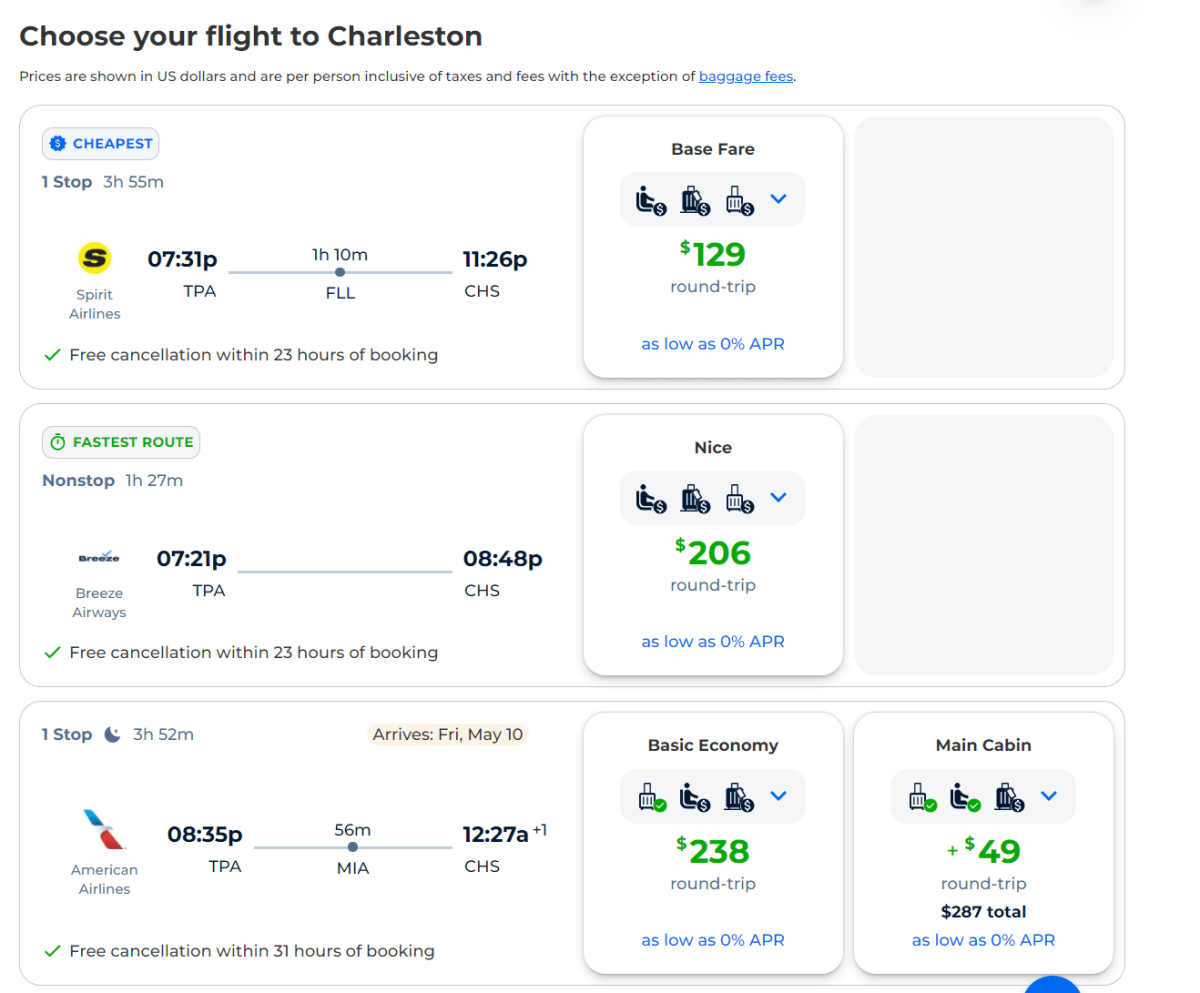I’ve spent a lot of time talking about the implementation of New Distribution Capability (NDC) by the airlines and global distribution systems (GDSs)… and how it has been truly terrible. But my issue has never been that NDC is bad across the board. It’s just that airlines like American have been handling the rollout in a strangely punitive way that has only created fierce opposition in the agency community. Now, we have a case study with Breeze that shows a positive side of NDC, so I decided to highlight it.
Breeze has announced that it has started selling tickets through Priceline effective this week, and this is a big deal. To explain why, I’m going to need to back up a bit.
For years airlines have sold tickets via EDIFACT, an ancient solution which requires GDSs like Sabre or Travelport to be the brains of the system. These GDSs take fares filed publicly through a company that airlines themselves own called ATPCO. Then they get real-time availability for flights from the airlines, and they calculate what pricing is for any particular itinerary. If airlines wanted to sell tickets to the public, they generally had to run everything through a GDS except for phone reservations until the invention of airline direct internet sales in the 1990s. Even companies like Priceline and Expedia would just use GDS data for the results they displayed to customers. The GDSs were a true gatekeeper.
The problem with the GDSs is two-fold. One, they require playing by these old, complex rules and integrations that new-line airlines may not want or need to do on their own. Two, GDSs haven’t been cheap for airlines to use. The model is backwards in that airlines actually pay the GDSs to have their content sold, and then GDSs pay travel agents (including online travel agents like Expedia and Priceline) to use their systems vs another GDS. The costs add up.
The airlines have tried to hammer away at those costs, and over time some have made progress. But they still find value in participating in the GDSs, because the revenue from high dollar business and premium leisure customers makes up for it. For an airline like Breeze, it would be hardly worth it to take on all that expense and complexity when they aren’t doing much in the way of business travel anyway. The math just doesn’t work.
This is where NDC comes in to save the day. NDC is just a standard that airlines can use to build an XML feed that third parties can take and use to sell tickets. This eliminates nearly all barriers out there that would have prevented Breeze from selling through third parties in the traditional system.
All Breeze had to do was either build its own feed or, more likely, work with another company like Accelya which runs the feeds for a variety of airlines, including American and United. Once the feed is built, it can go to anyone who wants to sell travel, as long as Breeze says ok.
This explains how Breeze can so easily sell tickets on Priceline. It either built the feed or contracted to have it built, and then it just needed a commercial arrangement that Priceline was willing to accept. With that done, Breeze just flips on access and Priceline can pull it in along with all its other feeds. Since NDC is a standard, further integration of additional feeds should be very easy.
So now, when someone looks at, say, a roundtrip from Tampa to Charleston (SC) on Priceline, they’ll see this:

You can imagine a lot of people would have never thought to go to Breeze’s website… heck, they may not have even heard of Breeze. But now, the option is right there for all to see, and this is just the start. Breeze currently only shows the base fare, but it will soon have its a la carte ancillaries and bundles up for sale as well. NDC makes all of this pretty easy.
As a side note… don’t get too excited that this means you’ll soon see Southwest doing the same thing. The cost and complexity hasn’t been Southwest’s issue. It already has GDS connections, but it won’t allow them to be used by online travel agents. Southwest has spent gabillions of dollars and many decades training people to use its own website and has enormous brand recognition. The airline still has to think it’s the right fit strategically, and so far, Southwest has not made that decision. It does cost some money to sell through Priceline or other third parties, after all, and Southwest has done so much to get people to come direct, it thinks it would erode value to let people go to another website.
For an airline like Breeze, however, this makes a lot of sense. It is the equivalent of buying really good paid ads for Google search. Breeze just wants to find the people where they are looking for travel. And a lot of people look using Priceline.
This can open up opportunities elsewhere. Breeze could provide this content to anyone who wants to use a website to sell tickets. It could go to traditional travel agencies that use an agent desktop to integrate flights from both the GDS and direct connections. It could go to any third party that has an attractive audience. It’s just that much easier for Breeze to push its content out there into the places where it finds strategic value.
In the past, the math probably didn’t make sense, but with NDC, it’s a different world. If airlines like American would have taken a smarter path, then more people would have seen NDC positively instead of the toxic image it has acquired over the last year.

























